The first stablecoin with a separation mechanism for yield, allowing users to hold NFTs to earn returns on underlying assets.
Author: Alea Research
Translated by: Deep Tide TechFlow
Stablecoins have become an indispensable part of decentralized finance (DeFi), but they also come with numerous trade-offs and challenges.
For instance, over-collateralized crypto assets supporting stablecoins (like DAI) face volatility risks; centralized stablecoins (like USDC and USDT) offer little assurance regarding reserve transparency; algorithmic stablecoins (like UST or FRAX) have proven difficult to maintain stability. Additionally, stablecoin issuers typically capture the yields generated by the supporting assets, while users do not benefit from them.
STBL proposes a fourth solution: allowing users to mint stablecoins fully collateralized by real-world assets (RWA) while retaining the generated yields. STBL divides users' deposits into disposable stablecoins and a yield-generating NFT position, providing holders with liquidity and predictable returns.
In this issue, we will delve into the architecture of STBL, the market problems it addresses, and the specific operation of the product.
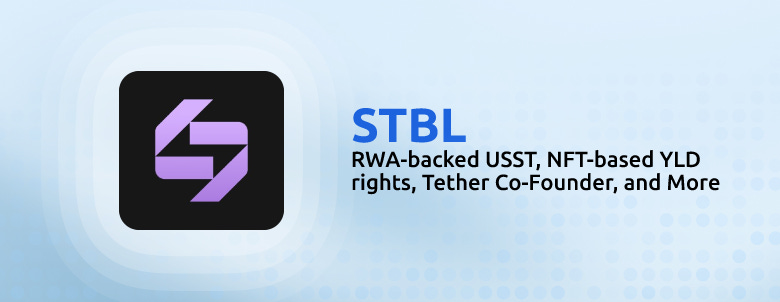
What is $STBL
$STBL is a non-custodial stablecoin backed by U.S. Treasury bonds or private credit. The key distinction from other solutions lies in its three-token design: $STBL, $USST, and $YLD. Among them, $STBL serves as the governance token, while the two main stablecoin tools are:
USST: A fully collateralized stablecoin pegged 1:1 to the U.S. dollar, issued under the ERC-20/4626 standard, usable for on-chain payments, exchanges, and lending. USST can be used for on-chain payments, liquidity provision, lending, or staking into the protocol's liquidity and minting pool (LAMP). Users can redeem their underlying collateral assets at any time without penalties.
YLD: An ERC-721 NFT representing the holder's right to the yields generated from the deposited assets. Each YLD token accumulates interest in real-time based on coupon payments from tokenized Treasury bonds, private credit, or other fixed-income instruments. The NFT design achieves yield isolation and can be transferred through over-the-counter (OTC) transactions while preventing retail speculation.
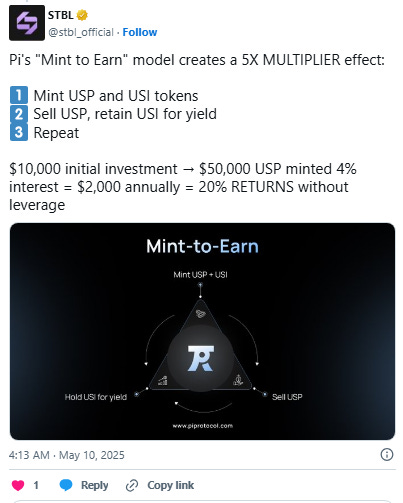
(Previously, STBL was known as Pi, where USI referred to YLD and USP referred to USST.)
STBL adopts a "Mint-to-Earn" model, distributing governance token STBL based on the proportion of minting activities that reward early users, thereby helping to bootstrap liquidity. This model allows users to earn passive income by holding YLD tokens, with yields sourced from real-world assets (RWA) rather than inflationary issuance or leveraged operations. Users can choose from multiple vaults, including low-risk Treasury vaults with predictable annual yields of 4-5% or high-return private credit vaults with annual yields of 10-12%.
STBL also maintains a transparent fee structure, allocating 20% of all yields to ensure sustainability. These fees are distributed to the following purposes: development financial reserves, loss reserve pools to absorb defaults, rewards for stakers of USST, and additional yields for long-term lock-up holders (sUSST).
Stablecoin Market Landscape and Adoption of Real-World Assets (RWA)
Stablecoins are among the most widely used assets in digital finance, with a circulation exceeding $290 billion by 2025. However, the yields from their reserves are still captured by the issuers.

Meanwhile, the total locked value of tokenized Treasury bonds and other real-world assets (RWA) has surpassed $30 billion, reflecting the growing demand for regulated, yield-generating tools on-chain. STBL directs the predictable cash flows generated by real-world assets directly to stablecoin users, creating a sustainable alternative to unstable algorithmic coins and opaque custodial models.
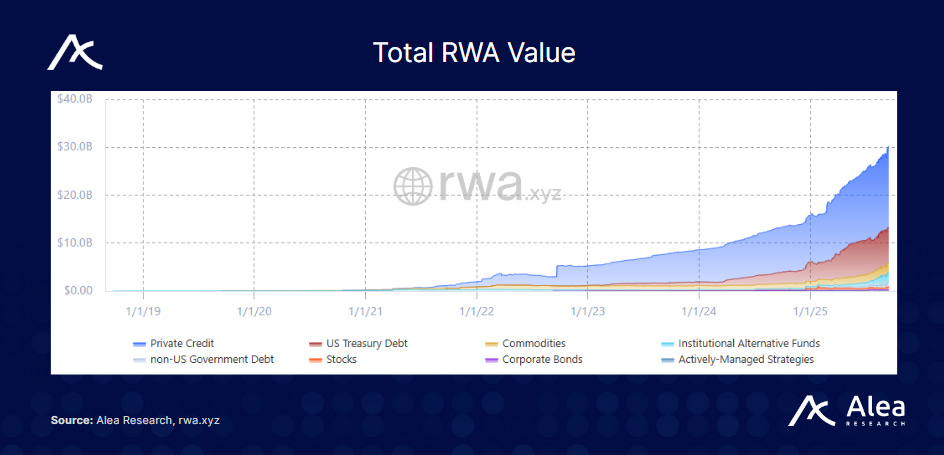
$STBL Token Economics
$STBL is a governance/fee token in a three-asset system that separates currency ($USST) from yield ($YLD). In principle, protocol fees (such as minting/redeeming, yield routing, or auctions) and parameter changes (such as oracles, collateral, token issuance) are all determined by STBL governance.
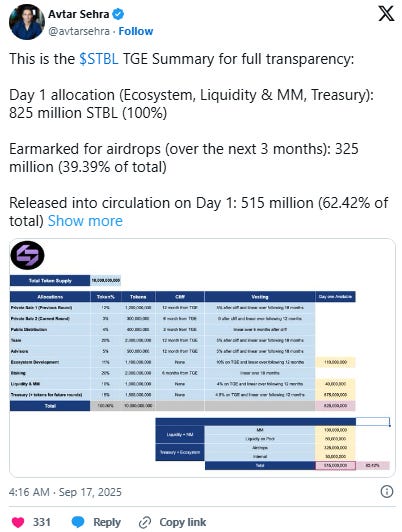
The total supply of $STBL is 10 billion, with an initial unlock amount of 825 million (8.25% of the supply).
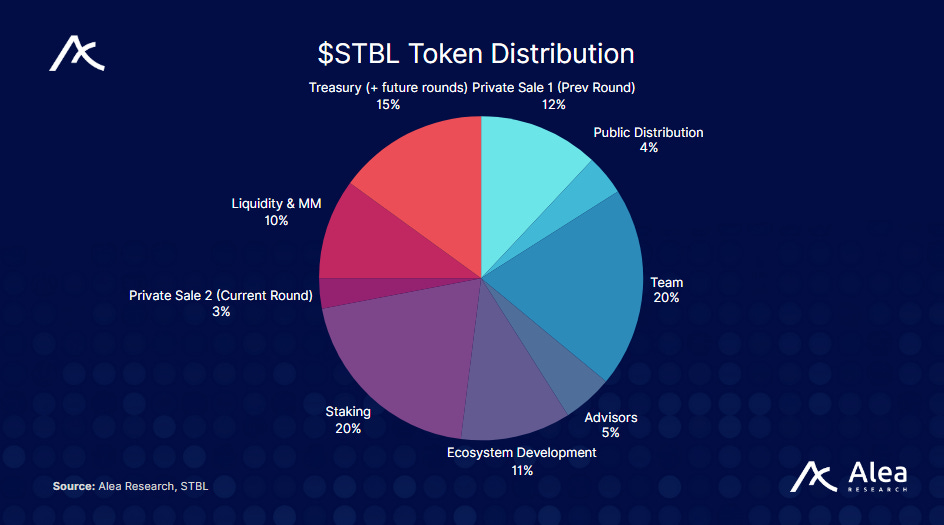
The token unlock schedule is as follows:
Private Sale 1 / Team / Advisors: 12-month cliff (5% released immediately after the cliff, then linear release over 18 months)
Private Sale 2: 6-month cliff → 12-month linear release.
Public: 3-month cliff → 6-month linear release.
Staking: 6-month cliff → 18-month linear release.
Ecosystem: 10% released at TGE, then 12-month linear release.
Liquidity and Market Making: 4% released at TGE, then 12-month linear release.
Treasury Reserves: 45% released at TGE, then 12-month linear release.
免责声明:本文章仅代表作者个人观点,不代表本平台的立场和观点。本文章仅供信息分享,不构成对任何人的任何投资建议。用户与作者之间的任何争议,与本平台无关。如网页中刊载的文章或图片涉及侵权,请提供相关的权利证明和身份证明发送邮件到support@aicoin.com,本平台相关工作人员将会进行核查。




